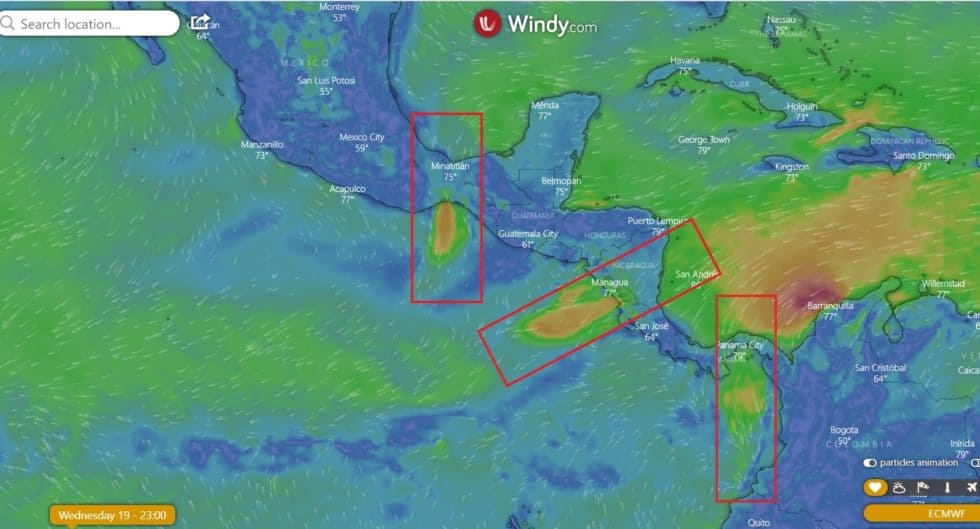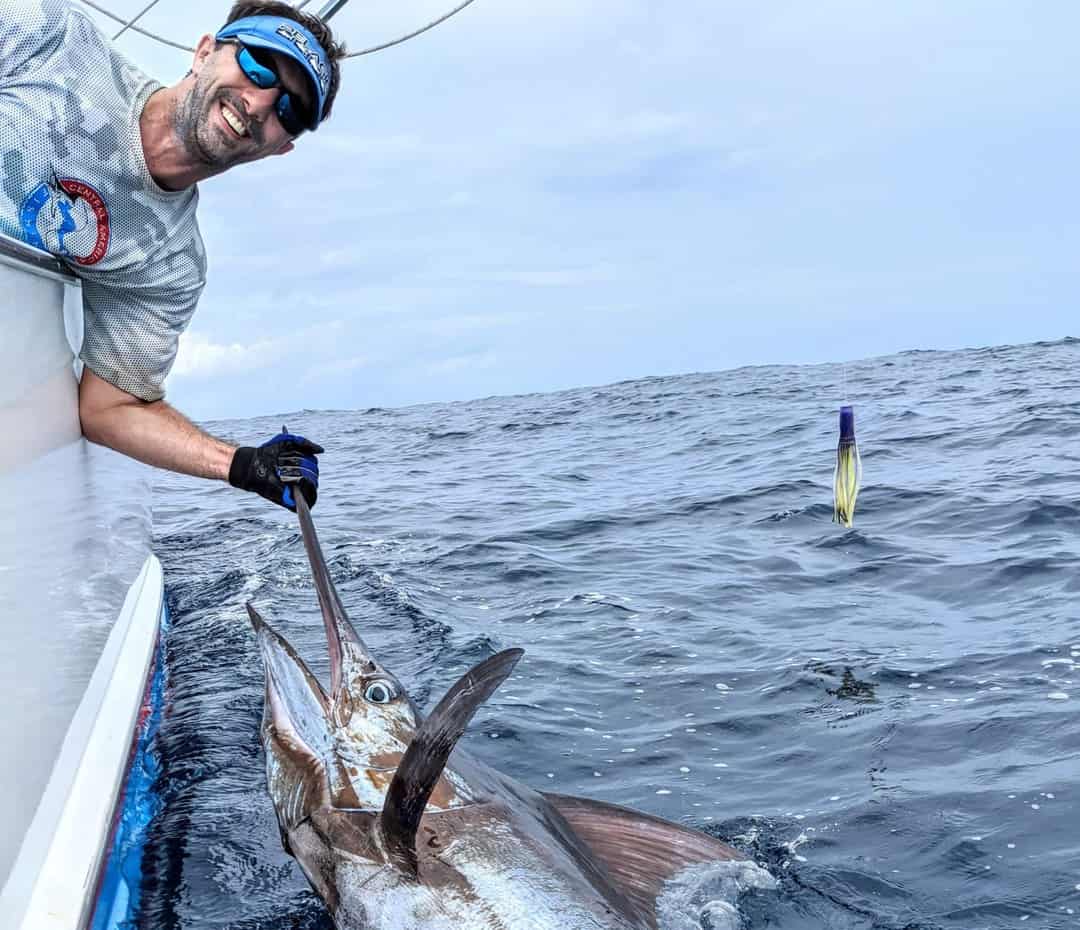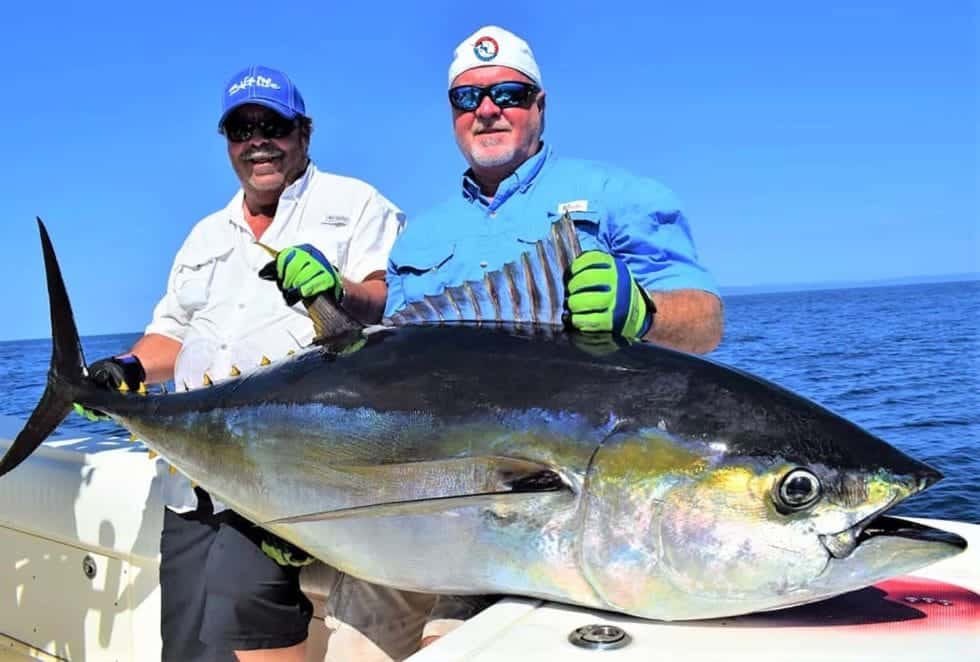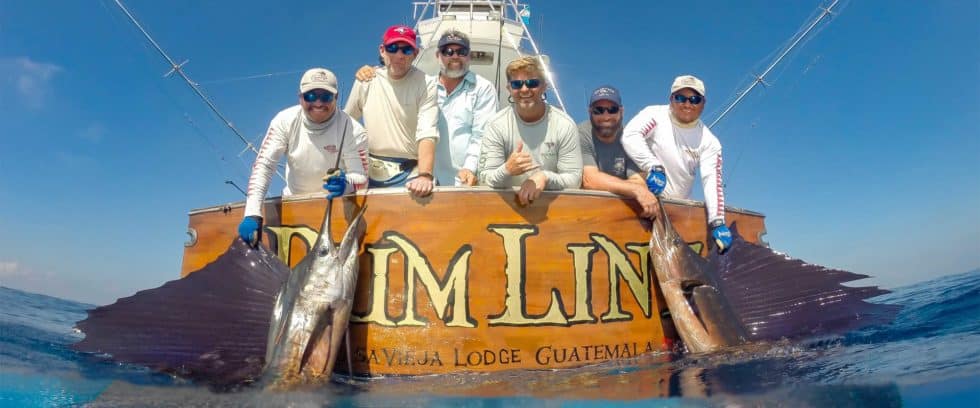Offshore Fishing in Central America
Available Species
FAQ’s
Offshore Fishing in Central America has been considered some of the best in the entire world for decades thanks to its calm waters, warm tropical weather, and unbelievable billfish numbers. We catch marlin and sailfish all twelve months of the year, but in peak season we can produce jaw-dropping numbers. It’s not just billfish that attracts offshore anglers to Central America, the warm tropical waters also offer phenomenal fishing for yellow-fin tuna, dorado (mahi), and wahoo. Combine that with beautiful beaches, luxury hotels and marinas, and friendly local culture and you have the recipe for an unforgettable fishing vacation. Read below to learn more about where the best offshore fishing in Central America happens, then trust our decades of local expertise and see why nearly 40% of our anglers are repeat & referral guests!
Where is the Best Offshore Fishing in Central America?
The best sport fishing in Central America is along the Pacific Coast thanks to two major ocean currents that collide there: the California Current coming from the north and the Humboldt Current, or Peru Current, coming from the south. These two currents bring in much needed cooler water and create a nutrient rich upwelling, which starts the food chain and sustains an incredible amount of marine life from baitfish to pelagic gamefish. The other important natural event that occurs here are the strong seasonal winds from the Gulf of Mexico and the Caribbean that blow from east to west during the months of December through April, which are a combination of seasonal trade winds and cold fronts sent down from the North American winter.
That is important because these same winds blow the oxygen and baitfish-rich waters farther offshore, which is then replaced by warmer, low-oxygen water essentially creating uninhabitable zones in the ocean. This leaves the pelagic gamefish with little option but to find better quality, life-sustaining water – which happens to be in southern Guatemala, the far east and west sides of Panama, and Central & Southern Costa Rica. While new catch-and-release laws help keep the billfish populations in Central America healthy, geography and weather patterns play a huge role in congregating fish into certain zones and that a major reason why Costa Rica, Panama, and Guatemala rank among the world’s best sport fishing destinations year after year.
Offshore Fishing in Costa Rica
Costa Rica is now famous for offering overnight trips to the offshore seamounts, which is arguably the best marlin fishing in the entire world. These multi-day trips usually offer lucky anglers double digit marlin bites, which is hard to replicate anywhere on Earth. Costa Rica mandates the use of circle hooks when billfishing and all sailfish and marlin are strictly catch and release so the populations here are healthy and consistent from year to year.
We don’t just target billfish when offshore fishing in Costa Rica, any day can produce a school of yellow-fin tuna, trophy-sized dorado, or even wahoo. Thanks to new laws in 2017 that limited commercial fishing pressure, Costa Rica’s tuna fishing has been getting better and better each year. Yellow-fin tuna are often spotted swimming with large pods of spinner dolphins and/or birds diving from above, so when we find this type of chaotic scene we will stop trolling for billfish and target the tunas with poppers, jigging cedar plugs, and casting stick baits. Dorado, or mahi, can be found under floating logs, current lines, and often times the trophy adult-sized fish will simply crash the billfish spread from the side and inhale a ballyhoo.
Los Suenos Fishing
Coast 2 Coast
The Best of Costa Rica
All Inclusive Paradise
Quepos Fishing Adventure
Fish The Osa Peninsula
Tamarindo Fishing Vacation
5 Star Costa Rica
FADs Marlin Fishing
Los Suenos Long Weekend
Costa Rica and Panama Combo
Offshore Fishing in Panama
Unlike the rest of the billfish-crazed Central America, Panama is the one country that attracts just as many (if not more) offshore anglers looking to target yellow-fin tuna over sailfish or marlin. You can fish the entire world and won’t find many places that offer you the calm waters and consistent yellow-fin tuna fishing that you’ll find in Panama. A huge part of the appeal is that the majority of tuna fishing in Panama is done on topwater lures and light tackle spinning outfits, so it’s a very visual and hands-on experience running and gunning after boils of yellow-fin tuna feeding at the surface. Offshore fishing in Panama also offers fantastic opportunities for dorado and wahoo thanks to offshore islands, underwater pinnacles, and plenty of floating debris that gets washed out to sea.
Panama Fishing Paradise
Popper Addicts
The Best of Panama
Fishing The Hannibal Bank
Inshore Fishing at Jurassic Park
Tuna Junkies
Affordable Panama Fishing
Panama Mothership
Panama Private Island Lodge
Panama Coast 2 Coast
Fishing Highlights of Panama
Artificials Only
Offshore Fishing in Guatemala
All Inclusive Fishing Guatemala
Best of Guatemala
Highlights of Guatemala
Guatemala Fly Fishing
Guatemala Fishing Weekend
Bonefish to Billfish
Offshore Species of Central America
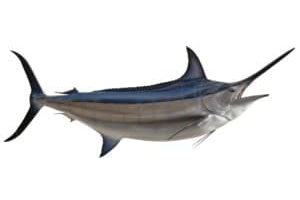
Black Marlin
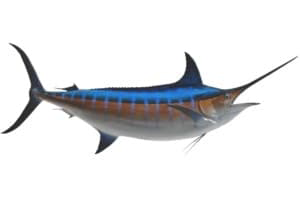
Blue Marlin
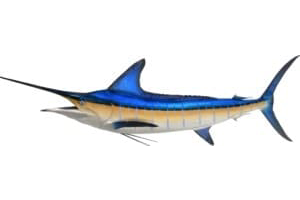
Striped Marlin
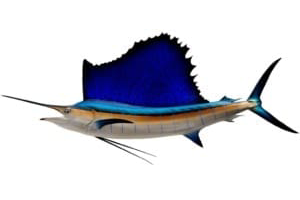
Sailfish
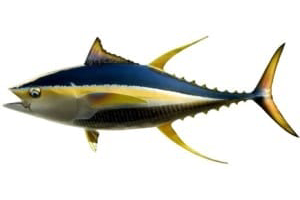
Yellowfin Tuna
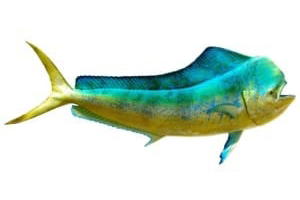
Dorado
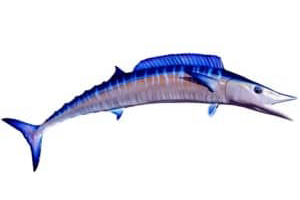
Wahoo
Offshore Fishing FAQs
Do I need a fishing license to fish in Costa Rica?
YES. All anglers need a fishing license to fish in Costa Rica. These are sold by the Instituto Costarricense de Pesca y Aquacultura, or INCOPESCA as they are known here. Unfortunately their website has functionality and language issues so it’s not easy to use, so you can buy the license in the morning right before you fish for the first time. The cost is $15 for one week or $30 for one month and it must be paid in cash.
How many people will be on my fishing boat?
All fishing charters booked by Central America Fishing are private, so the boat is 100% yours. We do not set up any shared charters.
What is the standard tip for a fishing charter in Costa Rica?
A standard tip for a charter fishing crew in Costa Rica is 10%-20% of the cost of the charter. Most captains are paid a low salary with the idea they’ll earn more tips the more they fish, but many mates rely 100% on tips for their income. Tipping in USD or Costa Rican colones is fine. We recommend giving the entire tip to the captain and let him divide it up with the mate.
Can I bring my own fishing gear?
OF COURSE! Even though our private charters provide all the fishing tackle and bait you’ll need, you are always welcome to bring your own lures, reels, and even rods if you want to catch fish using your own tackle. Fly anglers are always encouraged to bring their own fly gear.
Which fish in Costa Rica are catch and release and which ones can I keep to eat?
By law, all billfish in Costa Rica are strictly catch and release. While not a law, we also strongly encourage releasing all roosterfish, tarpon, and cubera snapper as they are such prized inshore species. Other species like tuna, dorado (mahi), wahoo, snappers, groupers, corvina, snook can be kept and enjoyed for a fresh seafood dinner.
Can I bring fish back home with me to my own country?
If you really want to enjoy your catch our best advice is to eat it while it’s fresh here in Costa Rica. We understand many of you love the idea of a Costa Rican seafood dinner in the comforts of your own home, so the good news is there is no law against it and people do it all the time. However – we do not have the final say in this so there are some things you need to keep in mind:
1 – Unlike some other popular fishing destinations, in Costa Rica there is no service that will package and ship fish home for you. If you want to bring fish home with you you’ll have to do it yourself in your own luggage. Our best advice is to bring down a soft sided, leak-proof cooler, have your fish frozen completely solid, wrap them in newspaper, and then check your cooler as part of your luggage since it will stay cooler in the cargo hold of the plane versus in the cabin as a carry-on. If you don’t have a cooler or forget to bring one, you can purchase affordable plastic coolers here in local grocery stores.
2 – While Costa Rica does not prohibit you from bringing fish fillets home with you, your international airline might. We strongly recommend you confirm this with your airline (in writing if possible) or you may have the fish confiscated from you at the airport check-in.
3 – Even if your airline lets you fly the fish home, your local customs may have an issue with you bringing in meat products from a foreign country. In our experience most customs agents don’t seem too interested in you bringing back frozen fish fillets from your fishing vacation to Costa Rica, but it can depend on the agent and depend on the day.
What if there is bad weather on our fishing day?
First of all, it is extremely rare to have a fishing day cancelled due to bad weather. Costa Rica is too far south for hurricanes, and on top of that we custom design every single one of our Costa Rica fishing packages to factor in not only where you’ll have the best fishing but also the best weather & sea conditions for the time of year you visit us.
It does happen every once in a while however, so if the captain, local marina, or government deem the conditions are unsafe the trip will be cancelled. The first course of action is to try and reschedule you, but if that is not possible you will be refunded in full.
Please note that rain and dark clouds are not considered bad weather. We are in the tropics and rain is a common occurrence here so that is not a cause for cancelling the trip. Many great fishing days happen in the rain – as they say the fish are wet anyway!
Why Fish With CAF?
We have been fishing, living, and traveling around Central America since 2003. Plan your trip with local experts to make sure you are in the right place, at the right time, and on the right boat. We’ll help you fish for what you want, the way you want.
Free vacation planning + the best direct rates. No booking fees!
Personalized service from pre-arrival to 24/7 in-country support.
Hand-picked accommodations, fishing captains, expert guides for the best vacation experience.
Nearly 40% of our anglers are repeat & referral guests. CAF puts you on the fish!
We are proud to have a global reach and have hosted anglers from 14 different countries here in Central America!
Media & Press
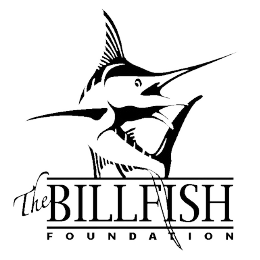

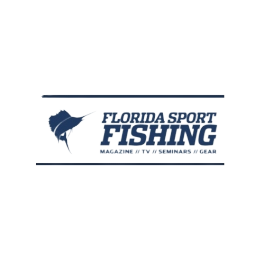









Conservation & Charity Partners
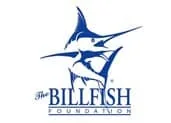
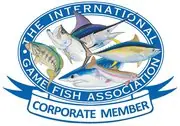
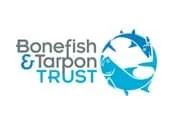
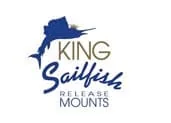


All fishing vacations booked with Central America Fishing include the following:
- Free Vacation Planning (no fees + direct rates)
- VIP Airport Meet & Greet upon arrival into SJO
- Private, air-conditioned transfers with English speaking driver.
- Luxury, private accommodations hand-picked and customized for your group. Choose between private condos & villas, luxury beach resorts, exclusive boutique hotels, and fishing lodges.
- Private fishing charters
- All eco / adventure tours you’d like to include
- All Costa Rican taxes
- Free quotes on travel insurance
- Pre-arrival assistance with dinner reservations, tee times, pre-stocking your condo or villa, hiring a private chef, and special requests.
- 24/7 support once you are here in country

